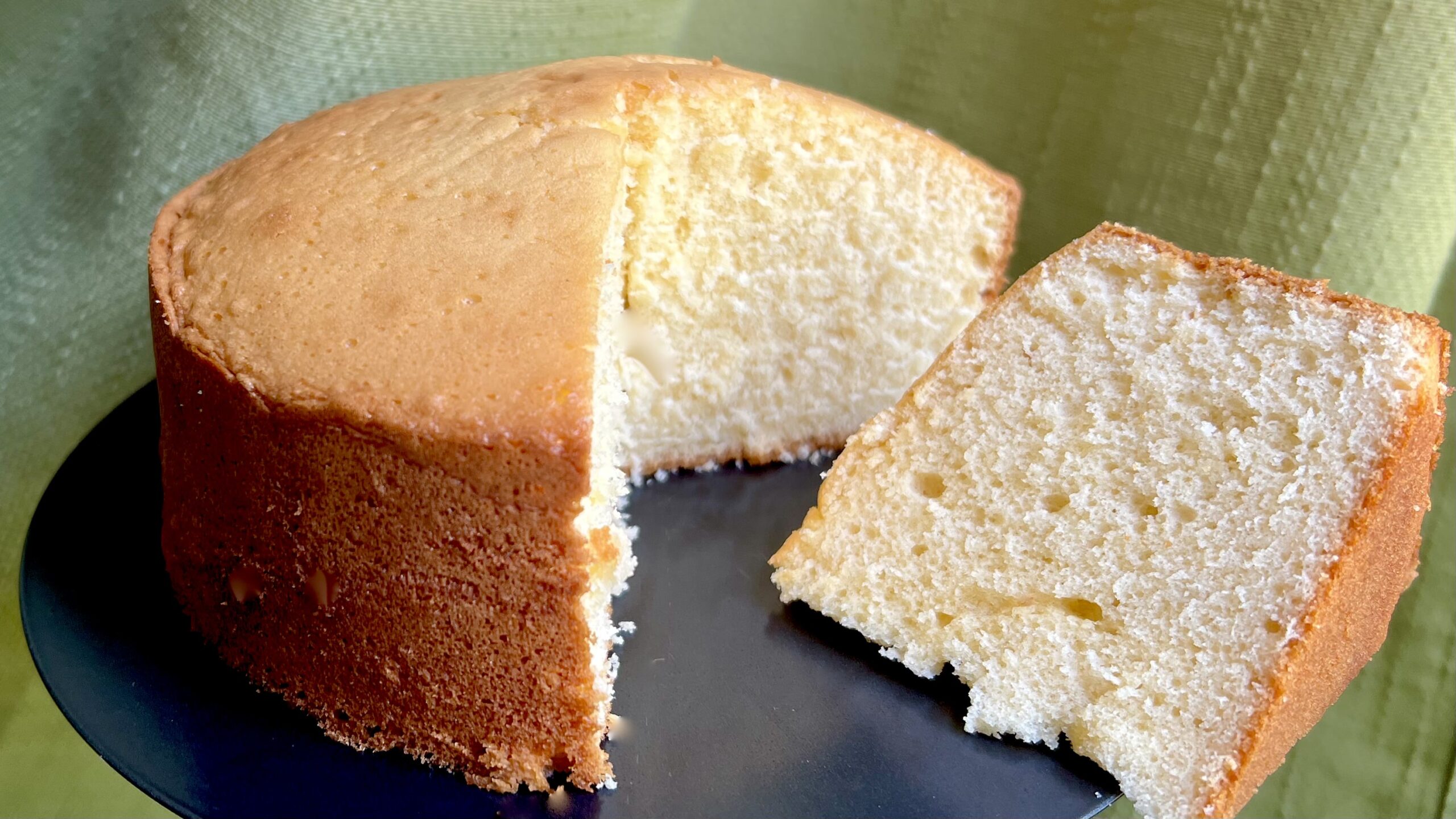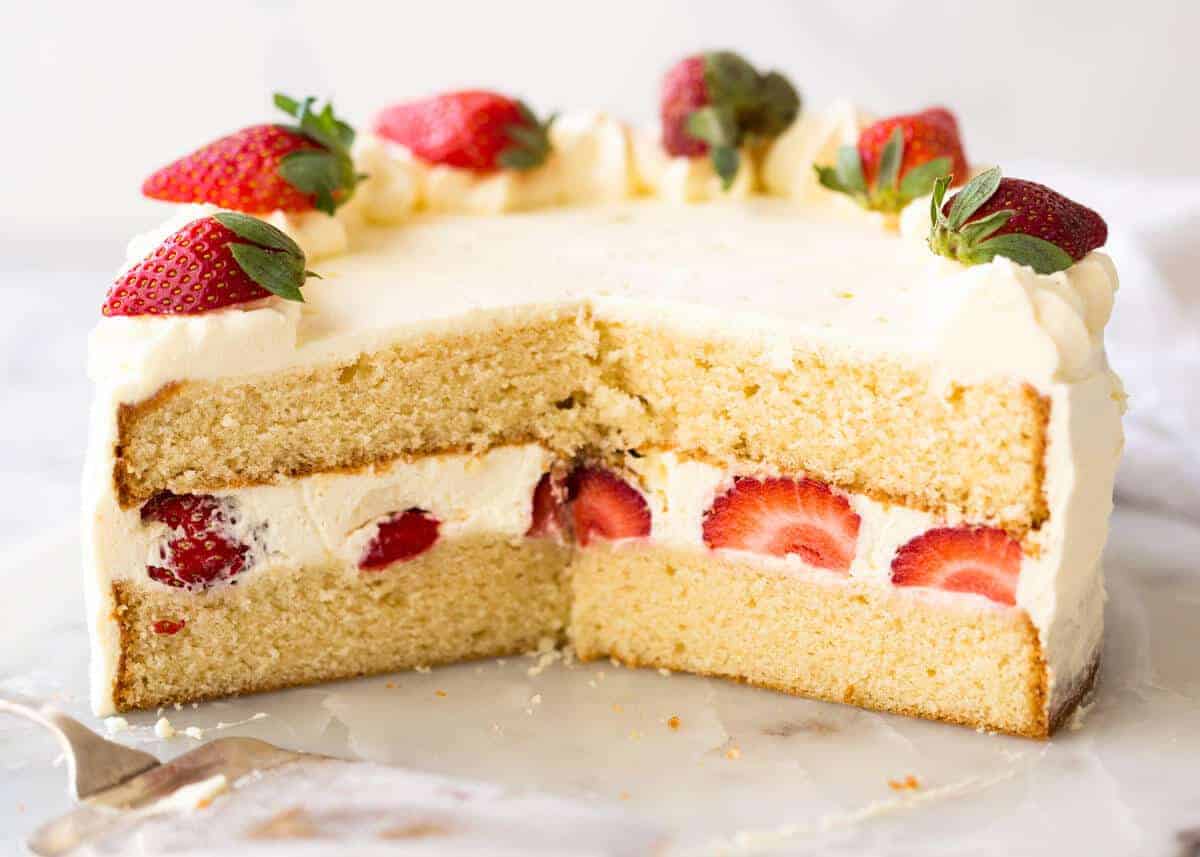Indulge in the delightful experience of baking a classic vanilla sponge cake with our comprehensive guide. Whether you’re a seasoned baker or just starting your culinary journey, this recipe will empower you to create a delectable masterpiece that will tantalize your taste buds and impress your loved ones.
With clear and concise instructions, we’ll walk you through every step of the process, from gathering the essential ingredients to mastering the perfect baking techniques. Along the way, we’ll uncover the secrets to achieving a light, fluffy texture and a golden-brown exterior that will make your cake the star of any occasion.
Basic Ingredients

A simple vanilla sponge cake recipe calls for a few essential ingredients that are easily accessible and commonly used in baking. These ingredients play crucial roles in creating the cake’s structure, texture, and flavor.
List of Ingredients
-
-*All-purpose flour
This forms the base of the cake, providing structure and stability.
-*Granulated sugar
Provides sweetness and helps create a tender crumb.
-*Baking powder
Acts as a leavening agent, causing the cake to rise during baking.
-*Salt
Enhances the flavor and balances the sweetness.
-*Unsalted butter
Adds richness, tenderness, and helps create a moist crumb.
-*Eggs
Bind the ingredients together, add moisture, and contribute to the cake’s rise.
-*Vanilla extract
Enhances the flavor and aroma of the cake.
Step-by-Step s
Making a vanilla sponge cake is a straightforward process that involves a few simple s. Follow these s carefully to ensure a light and fluffy cake every time.
Before you begin, ensure you have all the necessary ingredients and equipment. You will need:
- 1 1/2 cups (187g) plain flour, plus extra for dusting
- 2 teaspoons (8g) baking powder
- 1/4 teaspoon (1g) salt
- 1 cup (200g) unsalted butter, softened
- 1 1/2 cups (300g) caster sugar
- 3 large eggs
- 1 teaspoon (5ml) vanilla extract
- 1/2 cup (120ml) milk
Mixing the Batter
- Preheat the oven to 180°C (160°C fan-forced). Grease and flour a 20cm round cake tin.
- In a large bowl, whisk together the flour, baking powder, and salt.
- In a separate bowl, cream together the butter and sugar until light and fluffy.
- Beat in the eggs one at a time, then stir in the vanilla extract.
- Alternately add the dry ingredients and the milk to the butter mixture, beginning and ending with the dry ingredients. Mix until just combined.
Baking the Cake
- Pour the batter into the prepared cake tin and bake for 30-35 minutes, or until a skewer inserted into the center comes out clean.
- Allow the cake to cool in the tin for 10 minutes before turning it out onto a wire rack to cool completely.
Baking Tips
To achieve a perfectly baked sponge cake, it’s crucial to pay attention to the oven temperature, baking time, and cooling methods. Here are some tips and tricks to guide you through the baking process.
Oven Temperature : Preheat the oven to the correct temperature before placing the cake batter inside. An accurate oven temperature ensures even baking and prevents the cake from over- or under-baking.
Baking Time : The baking time varies depending on the size and depth of the cake pan used. Insert a toothpick or skewer into the center of the cake to check for doneness. If it comes out clean, the cake is ready.
Cooling Methods :
- Invert the cake: Once baked, immediately invert the cake onto a wire rack to allow steam to escape and prevent the cake from becoming soggy.
- Cool in the pan: For larger cakes, let the cake cool in the pan for about 10 minutes before inverting it onto a wire rack.
- Wrap in plastic: After cooling on the wire rack, wrap the cake in plastic wrap to prevent it from drying out.
Troubleshooting Common Issues
Sponge cakes, while seemingly straightforward, can sometimes present challenges during baking. Here are some common issues and their solutions:
Cake Deflates or Sinks in the Middle
- Overbeating the batter: Overbeating incorporates too much air, which can cause the cake to rise rapidly in the oven and then collapse as it cools.
- Using too much baking powder or soda: Excess leavening agents can cause the cake to rise too quickly, resulting in a deflated or sunken center.
- Opening the oven door too early: Fluctuations in oven temperature can cause the cake to deflate as it adjusts to the sudden change.
Cake is Dense or Rubbery
- Overmixing the batter: Overmixing develops the gluten in the flour, resulting in a tough and dense cake.
- Not enough sugar: Sugar adds sweetness and tenderness to the cake. Insufficient sugar can lead to a dense texture.
- Using old baking powder or soda: Inactive leavening agents fail to create enough lift, resulting in a flat and dense cake.
Cake is Too Brown on Top
- Oven temperature too high: Adjust the oven temperature to the recommended setting and use an oven thermometer to ensure accuracy.
- Overbaking: Keep a close eye on the cake during baking and remove it from the oven as soon as a toothpick inserted into the center comes out clean.
- Uneven heat distribution: Rotate the cake pan halfway through baking to ensure even browning.
Variations and Enhancements
The basic vanilla sponge cake is a versatile canvas for creativity. Explore endless possibilities by incorporating flavors, fillings, and frosting to customize your cake to suit any occasion or preference.
Enhance the presentation of your cake with simple yet elegant techniques. Experiment with piping, sprinkles, or fresh fruit to create a visually stunning centerpiece.
Flavor Variations
- Add a teaspoon of vanilla extract, almond extract, or lemon zest to the batter for a subtle yet flavorful twist.
- Incorporate grated carrots, chopped nuts, or dried fruits to create a moist and textured cake.
- For a vibrant and fruity twist, add a cup of fresh or frozen berries to the batter.
Fillings and Frosting
- Spread a layer of your favorite jam, fruit compote, or chocolate ganache between the cake layers for an indulgent treat.
- Top the cake with a simple buttercream frosting, whipped cream, or a decadent chocolate glaze.
- Pipe intricate designs or create a smooth, mirror-like finish with frosting techniques.
Presentation Enhancements
- Dust the cake with powdered sugar or cocoa powder for a classic and elegant touch.
- Pipe intricate designs using different colored frosting to create a festive or personalized look.
- Adorn the cake with fresh fruit, sprinkles, or edible flowers for a vibrant and eye-catching presentation.
Health Considerations
A simple vanilla sponge cake, while delectable, is not inherently a health food. It is primarily composed of refined carbohydrates and sugar, providing limited nutritional value.
Nutritional Value
A typical slice of vanilla sponge cake contains approximately:
Calories
250-300
Carbohydrates
40-50g
Protein
5-7g
Fat
10-15g
Fiber
Negligible
Healthier Alternatives
For individuals seeking a healthier option, consider the following substitutions:
- Whole wheat flour instead of all-purpose flour
- Natural sweeteners like honey or maple syrup instead of refined sugar
- Greek yogurt or applesauce instead of butter
- Fruit purees for added flavor and nutrients
Final Summary

Embark on this culinary adventure today and discover the joy of creating a simple yet extraordinary vanilla sponge cake. Whether you choose to savor it plain or adorn it with your favorite toppings, this recipe will become a cherished addition to your baking repertoire.
Happy baking!
Q&A
Can I use a different type of flour?
Yes, you can substitute all-purpose flour with cake flour or pastry flour for a more delicate crumb.
How do I prevent my cake from sinking in the middle?
Ensure your oven is preheated to the correct temperature and avoid opening the oven door during baking, as this can cause the cake to lose heat and collapse.
Can I add flavors to my sponge cake?
Absolutely! Feel free to incorporate extracts like vanilla, almond, or lemon zest to enhance the flavor profile of your cake.
How do I store my sponge cake?
Store your cake in an airtight container at room temperature for up to 3 days. You can also freeze the cake for longer storage.
Can I make my sponge cake gluten-free?
Yes, you can substitute all-purpose flour with a gluten-free flour blend to create a gluten-free version of this recipe.
